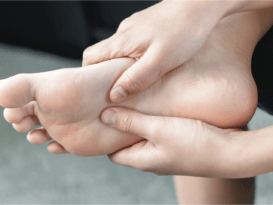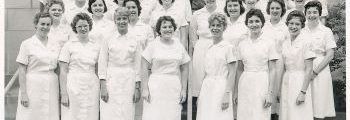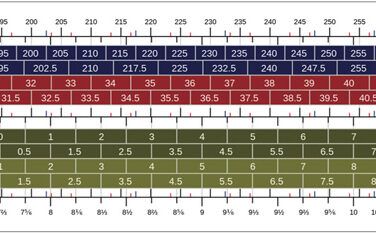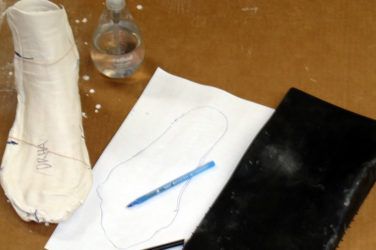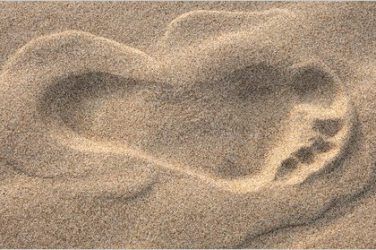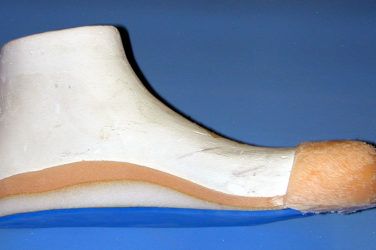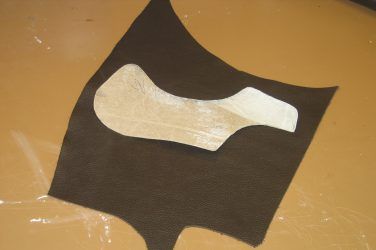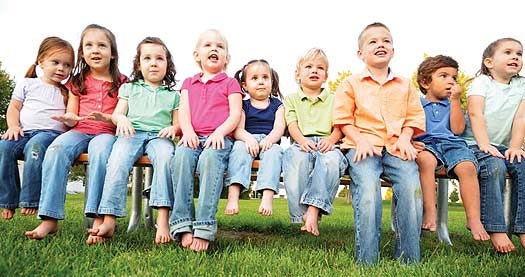
When it comes to children’s footwear, we may have to re-examine the notion of what we consider to be “good shoes.” For most of the 20th century, there was a general consensus that when buying children’s shoes you should, among other things, ensure that there was one-half inch of room or more at the toe, stiff counters to control rearfoot motion and support the ankle, and laces to get a good, snug fit.
These beliefs were maintained by shoe manufacturers, shoe retailers, medical doctors, and parents. But were they correct?
Shoes for Protection, Not SupportPrompted by the recent interest in minimalist shoes and barefoot running for adults, I have been reading about the subject in general. Many ideas come to us simply because they are widely held. Rather than push against the conventional wisdom, it is easier to accept what the crowd believes, especially if it “makes sense.” However, since I became a certified pedorthist, I have often wondered how people got along before orthotics, surgery, and extra-depth shoes were available.
Humans evolved walking barefoot, or close to it. It is only in the last couple of hundred years that shoes have become a consistent and necessary part of our overall dress and custom. But history also shows us that absent any specific condition or pathology, most children’s feet will develop naturally. This is the case for hundreds of millions of people in the developing world who walk barefoot every day. I do not doubt that some of these people have foot problems and suffer accordingly, yet I am sure that the majority of them go about their daily lives unaffected by ailments of the lower extremity.
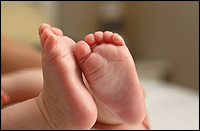 |
I am certainly not advocating throwing away shoes. We need shoes for protection. Shoes shield us from the extremes of weather. They protect our skin from external hazards such as dirt, glass, and stones. Shoes are necessary, but what kinds of shoes are best?
There is a growing body of evidence that shoe-wearing cultures develop more orthopedic foot problems such as bunions, corns, and hammertoes, not to mention fungal nail infections and in-grown toe nails. This is in part due to the shaped lasts used to make shoes. The in-flare of the lateral forefoot and the sweep along the hallux suit our current sense of aesthetics but crowd the toes. Straight-lasted shoes do not look as good, but they more closely resemble natural feet.
Pediatric Foot Development
During the first couple years of a child’s life, his or her foot will not have a pronounced arch, and the foot will look puffy and swollen compared to an adult’s. This is because children’s feet, like the rest of them, are soft, flexible, and loaded with fat. Due to the soft and pliable nature of their muscles and ligaments, we need to be especially cautious when fitting children with shoes. Poor-fitting shoes cause problems.
 |
The fat on a child’s feet begins to disappear as he or she starts to walk, typically around the first birthday. As the child walks more, he or she learns balance and stability, and eventually learns to run. Foot function, strength, and ability increase with time and use, and eventually the foot begins to take the shape of an adult foot. A medial arch may develop, tone and musculature appear, and the foot will continue to form beautifully.
If nature does such a good job of sculpting feet, are we then somehow interfering with the process? I think the answer lies in the fact that we often simplify complex problems in order to understand them. In doing so, we often lose sight of the bigger picture. It is easier to understand a principle and apply it generally than to identify the specific cases for its use. For example, it might be tempting to say that it is always good to drive on the right-hand side of the road, but this certainly isn’t the case if you are in the UK or a former British colony! Likewise, each of the statements listed earlier could be paired with a qualification:
- Ensure that there is one-half inch of room or more at the toe—but also make sure that the flex point of the shoe aligns with the ball of the foot.
- Look for stiff counters to control rearfoot motion and support the ankle—in those children who show hypermobile feet and severe pes planus.
- Use laces to get a good, snug fit—but be aware that over-tightening will restrict normal blood flow.
Good corrective shoes are certainly necessary for a segment of the population. Orthopedic shoes provide firm control, help develop an arch, and provide stability for those who need it, but not everyone does. As members of an integrated pediatric healthcare team, we need to always be on the lookout for abnormalities such as clubfoot or excessive internal rotation. Signs of talipes equinovarus can mask more serious diseases such as neuromuscular disorders, spinal tumors, or even trauma. The key is to know when to apply a principle and when it is unnecessary. If a young child regularly complains of pain in the feet or legs, and if it is interfering with normal play and leading to sedentary activity, then it should be investigated. However, absent any specific problem identified by a pediatrician, podiatrist, or other qualified professional, children’s feet should be allowed to develop naturally.
As the proud father of two children, ages six-and-a-half and five, I have spent time in children’s shoe shops, and I’ve examined the footwear that is on display. There are many shoe styles and brands available that support the minimalist approach. Increasingly, infants’ pre-walkers have come onto the market that are essentially thin, moccasin-type foot coverings. A child can wear these well after he or she begins walking. Mary Jane-type open-top shoes, for both boys and girls, with flexible soles, are also quite common. Although my opinion is not sought after during these shopping trips, I typically steer the decision toward fit and the less-is-more approach. Wisely, I do not get involved in the choice of colors!
Séamus Kennedy, BEng (Mech), CPed, is president and co-owner of Hersco Ortho Labs, New York, New York. He can be reached at seamus@hersco.com, or by visiting www.hersco.com
Selecting Children’s Shoes
A brief search of the web revealed a wealth of sites that promote the natural foot health of children and adults. Among the many suggestions for choosing children’s shoes are the following:
- Always buy shoes based on fit.
- Shoes should not be too tight, and ideally they will be boxy-looking so the toes can grow straight. Feet need room to develop, and tight shoes will restrict circulation and airflow.
- Flexible, bendable soles allow the foot to develop sensitivity, mobility, and intrinsic muscle strength, enhancing balance. Low heels or flat soles promote stability and keep the Achilles tendon from shortening prematurely.
- Children should be allowed to go barefoot as often as possible when in hazard-free environments. It is now becoming more common that children go barefoot in the house or yard.
Although by far the most popular shoes for children, many sneakers available today have soles that are not flexible and come with a raised heel and toe-spring that restrict natural motion.









